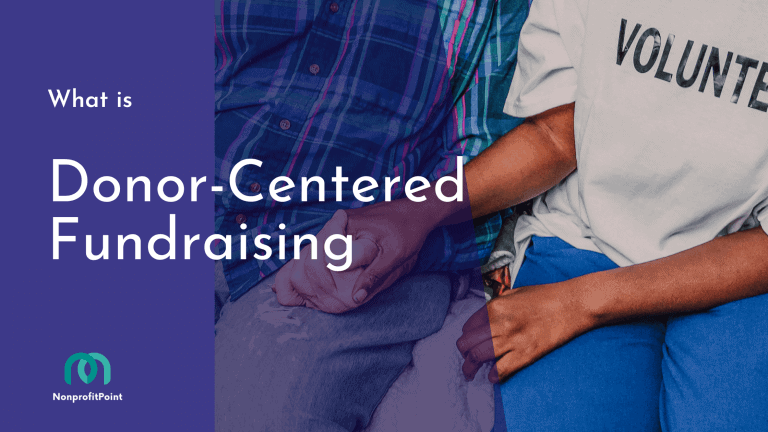How to Raise Money for Someone Without them Knowing: The Ultimate Guide
Have you ever wanted to help someone financially but hesitated because you didn’t know how to do it without making them feel uncomfortable? Perhaps you’ve witnessed a loved one going through a tough time and wanted to provide some financial relief, but didn’t know how to do it without violating their privacy. Whatever the case may be, raising money for someone without them knowing can be a challenging task, but it is not impossible.
In this blog post, we will explore how to raise money for someone without their knowledge respectfully and ethically. We will discuss the importance of being transparent and honest in fundraising efforts and the legal considerations to keep in mind. Additionally, we will delve into the different strategies that can be employed to ensure that the person in need receives the financial assistance they require, without compromising their privacy.
We understand that helping someone financially can be a sensitive issue, and we aim to provide you with the necessary tools to do so compassionately and respectfully. So, whether you’re looking to help a friend, family member, or a complete stranger, this guide will help you navigate the process of raising money for someone without them knowing. Join us as we explore the nuances of this complex issue and discover the various ways you can provide financial assistance without making anyone feel uncomfortable.
Here’s how to raise money for someone without them knowing:
Identifying the Need
Identifying the need is the first step in raising money for someone without them knowing. It is essential to understand why the person needs financial assistance and the amount required to meet their needs. This could include medical bills, rent, educational expenses, or other pressing financial needs.
To identify the need, it is essential to have a conversation with the person in need or someone close to them to get a clear understanding of their situation. Ask open-ended questions to allow them to provide detailed information on their financial circumstances. This will help you determine the best approach to raising money and how much needs to be raised.
Be sensitive and empathetic when discussing their financial situation, and ensure that they are comfortable sharing the details with you. Being transparent about your intentions and how you plan to raise the money to help them is also essential. This will help build trust and ensure that the person is comfortable accepting the financial assistance you provide. Once you have identified the need and the amount required, you can move on to the next step in raising money for someone without them knowing.
Identifying the Target Group
The target group is people most likely to donate to the fundraising effort. Understanding the target group’s needs and values is crucial to determine how to approach them.
For instance, if the fundraising effort is for a medical emergency, healthcare professionals, medical students, or anyone with a similar experience may be more likely to donate. Similarly, if the fundraising effort is for a social cause, those who are passionate about the cause or those who have been directly affected by the issue may be more willing to donate.
The target group can be identified through research and analysis of similar fundraising efforts, social media groups, or community organizations. Once the target group has been identified, the next step is to develop a strategy to reach out to them. This could include creating a compelling fundraising campaign, leveraging social media, or hosting an event that would appeal to the target group.
It is essential to tailor the fundraising strategy to the target group to ensure that it is effective and reaches the intended audience. Understanding the target group and their motivations is key to successfully raising money for someone without them knowing.
Crafting a Fundraising Strategy
Crafting a fundraising strategy is essential to ensure that the fundraising efforts are effective and reach the intended audience. The strategy should be tailored to the target group and the individual or cause being supported. One of the most important components of a successful fundraising strategy is establishing clear goals and expectations.
This includes setting a fundraising target and a timeline for achieving it. Additionally, a clear messaging strategy should be developed that conveys the purpose of the fundraising effort and why it is important to donate. The messaging should also be sensitive to the privacy concerns of the individual or cause being supported. Fundraising channels should be identified, such as social media, email, or phone, and the fundraising materials, such as flyers or social media posts, should be developed.
It is important to ensure that the materials used are consistent with the messaging and reflect the tone and style of the target group. Once the materials have been developed, it is crucial to identify a network of supporters who can help spread the word and raise awareness of the fundraising effort. This network can include family, friends, coworkers, and anyone passionate about the cause. Finally, tracking progress and adjusting the fundraising strategy as necessary is important. This may include updating the messaging, trying new channels, or adjusting the fundraising target. Crafting a well-thought-out fundraising strategy is key to successfully raising money for someone without their knowledge.
Raising Funds Without the Person’s Knowledge
Raising funds for someone without their knowledge requires much discretion and sensitivity. The first step is to identify a trusted third party who can accept the funds on behalf of the individual or cause being supported. This could be a family member, friend, or someone close to the person.
Once a third party has been identified, it is essential to understand the purpose of the fundraising effort and the expected outcome. The next step is to promote the fundraising effort to the target group identified in the previous step. This could be done through social media posts, emails, or phone calls.
It is important to ensure that the messaging is clear and consistent and that donors understand that their donations will go toward a specific cause or individual. All funds raised should be collected and held by the third party until the fundraising target has been met.
Once the target has been met, the funds can be transferred to the person or cause being supported. It is important to be transparent with the person about the funds received and to ensure they are comfortable accepting the funds. If the person does not want to accept the funds, they should be returned to the donors or donated to a related charity. Raising funds for someone without their knowledge requires great care and attention to ensure that the process is respectful and ethical.
Legal Considerations
When raising money for someone without their knowledge, it is important to consider the legal implications of such an effort. In most jurisdictions, accepting money on behalf of someone without their knowledge or consent could be considered fraud.
Therefore, ensuring that the person or cause being supported is aware of the fundraising effort and is comfortable with accepting the funds is important. It is also important to ensure that any funds raised are not used for illegal or unethical purposes, and that they are accounted for and reported appropriately. If the fundraising effort involves a significant amount of money, it may be necessary to consult with a lawyer to ensure that all legal requirements are being met.
It is also important to ensure that the fundraising effort complies with relevant tax laws. In some cases, donations made to individuals or causes may be tax-deductible, and it is important to ensure that donors receive the necessary documentation to claim the deduction.
Finally, it is important to be transparent with donors and to ensure that they understand how their donations will be used. Donors have a right to know that their funds are being used ethically and for the intended purpose.
By considering the legal implications of the fundraising effort and ensuring that all legal requirements are met, it is possible to conduct a successful fundraising effort without putting anyone at risk of legal consequences.
Delivering the Funds
Once the funds have been raised, it is important to deliver them to the person or cause being supported securely and efficiently. Depending on the amount of money raised, it may be necessary to use a secure payment method, such as a wire transfer or cashier’s check. If the funds are being delivered in person, it is important to ensure that the person delivering the funds is accompanied by a trusted third party who can act as a witness.
This can help ensure that the funds are delivered to the correct person and that there is a transaction record. Suppose the funds are being delivered to a cause or organization. In that case, it is important to ensure that the funds are delivered to the correct person or department within the organization.
It may be necessary to contact the organization in advance to ensure they are aware of the donation and identify the appropriate person to receive the funds. Sometimes, it may be necessary to provide documentation, such as a letter or certificate, to accompany the donation. This can help to ensure that the donation is properly documented and accounted for.
Finally, ensuring that the person or cause being supported is aware of the funds and is comfortable with accepting them is important. If the person or cause does not want to accept the funds, they should be returned to the donors or donated to a related charity. By delivering the funds securely and efficiently and ensuring that the person or cause being supported is aware of and comfortable with accepting the funds, it is possible to conduct a successful fundraising effort that benefits the intended recipient.
Final Thoughts
Raising money for someone without their knowledge can be a complex and delicate process, but it is possible to do so responsibly and ethically. By identifying a genuine need, selecting the appropriate target group, crafting a fundraising strategy, and ensuring legal compliance, it is possible to conduct a successful fundraising effort that benefits the intended recipient.
However, it is important to remember that transparency and honesty are key to any successful fundraising effort. While it may be tempting to keep the fundraising effort a secret, ensuring that the person or cause being supported is aware of and comfortable with accepting the funds is important. This not only helps to avoid legal complications but also ensures that the fundraising effort is conducted in a way that is ethical and respectful to the recipient.
In the end, raising money for someone without their knowledge should be seen as an opportunity to make a positive impact on someone’s life, rather than an opportunity to deceive or manipulate. By keeping this perspective in mind and following the steps outlined in this post, we can conduct fundraising efforts that are both effective and ethical, and that make a real difference in the lives of those we seek to help.






